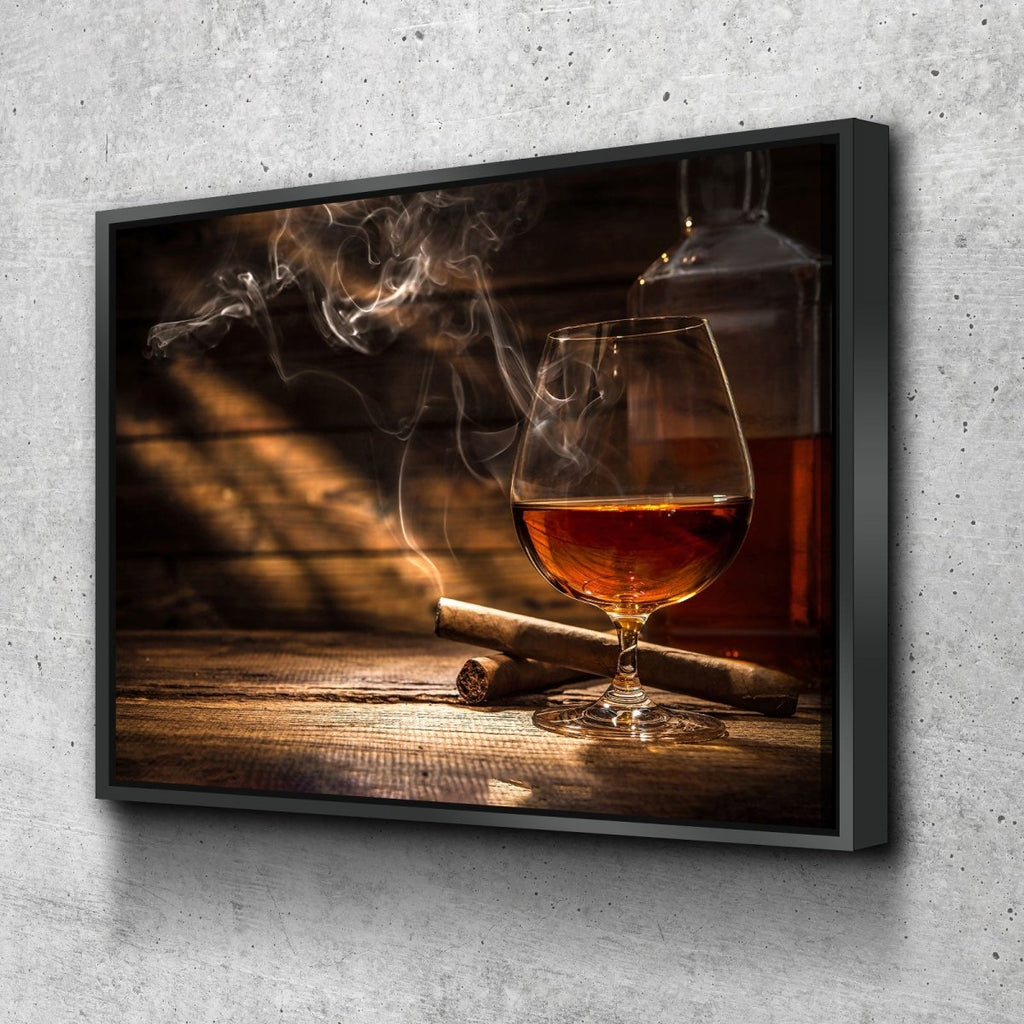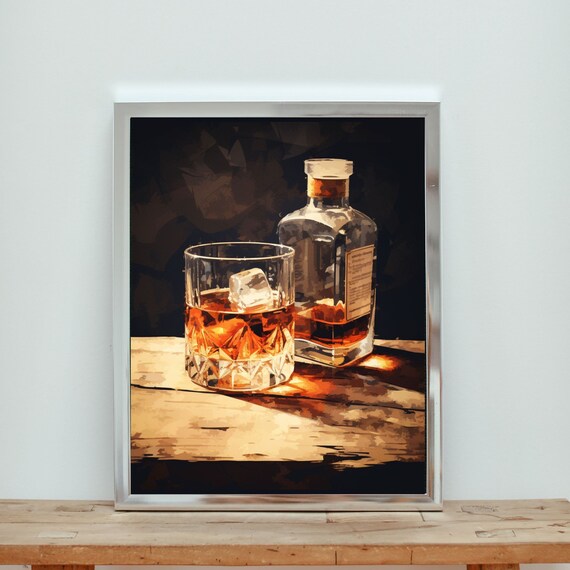The Appeal of Realism Art: A Deep Dive into Whiskey's Rich Heritage
The Appeal of Realism Art: A Deep Dive into Whiskey's Rich Heritage
Blog Article
The Relevance of Whiskey Art in Celebrating Heritage and Craftsmanship in the Beverage Sector
The intricate connection between bourbon art and the celebration of heritage and workmanship within the drink industry can not be overemphasized. Through attentively developed tags and bottles, bourbon brands envelop their historical origins and the artisanal skills that define their manufacturing techniques.
The Historic Roots of Whiskey
At the heart of scotch's attraction lies an abundant tapestry of historical origins that trace back to ancient people. The origins of scotch can be connected to the purification practices of the Sumerians and Babylonians around 2000 BCE, where early kinds of fermented grain beverages began to arise. It was in the Middle Ages that the art of purification advanced considerably, especially in Ireland and Scotland, leading to the production of whiskey as we understand it today.
The term "bourbon" itself originates from the Gaelic word "uisce beatha," implying "water of life." This phrase highlights the social value of whiskey in Celtic societies, where it was commonly connected with rituals, events, and common bonding. By the 15th century, purification came to be an identified craft within monastic communities, leading the way for the establishment of legal distilleries.
As trade paths increased, bourbon's appeal expanded, going beyond local boundaries and capturing the interest of connoisseurs worldwide. Whiskey Art. This historical journey reflects not only the craftsmanship behind scotch production however also its important role in social and social contexts, noting it as a significant drink throughout background
Artistic Expression in Branding
Bourbon branding stands as a compelling intersection of virtuosity and commerce, where visual identity plays a crucial role fit consumer assumption. The visual appeals of bourbon labels, product packaging, and advertising and marketing materials reflect not just the brand name's story yet additionally its core values and heritage. Through imaginative expression, distilleries communicate a narrative that reverberates with customers, evoking emotions and triggering connections.
Making use of color, typography, and imagery in branding offers to distinguish items in a saturated market. As an example, traditional concepts may stimulate a sense of credibility and craftsmanship, while modern-day designs can indicate advancement and forward-thinking. This tactical imaginative direction improves brand name recognition and commitment, allowing consumers to build a personal connection with the bourbon they choose.
Additionally, imaginative expression in branding typically acts as a celebration of local heritage. Distilleries regularly incorporate regional icons or historic references into their layouts, developing a local color that welcomes customers to partake in a wider social experience. Inevitably, the virtuosity behind whiskey branding not only improves aesthetic allure but also enhances the general story of the brand name, cultivating a deeper gratitude for the craftsmanship and heritage embedded in each container.
Workmanship in Container Layout
The artistry apparent in scotch branding prolongs past aesthetic identification to incorporate the craftsmanship involved in bottle style. Each bottle functions as a vessel not simply for the spirit within, however additionally for the tale it informs concerning its tradition, quality, and origin. The layout procedure calls for thorough focus to information, as components such as form, product, and closure contribute significantly to the general understanding of the whiskey.
Craftsmanship in container layout involves selecting high-quality glass that can enhance the scotch's shade and quality, while see here now likewise providing a tactile experience for the customer. The shape of the bottle must be both aesthetically attractive and functional, frequently mirroring the heritage of the brand name. Many distilleries go with special shapes or printed logos that stimulate a feeling of authenticity and background.
Furthermore, the label style and typography play a vital role in connecting the brand's story. Limited Edition. A well-crafted bottle not just mesmerizes the consumer's eye however also enhances the brand's dedication to quality and custom. By doing this, the workmanship of bottle layout becomes a vital element of the bourbon experience, merging virtuosity with a profound regard for heritage
Social Importance of Bourbon Art
Celebrating custom and workmanship, the cultural relevance of whiskey art goes beyond plain visual appeals, linking with the social and historical stories of the areas from which it originates. Each container offers as a canvas, portraying the one-of-a-kind stories, folklore, and customs that have actually formed local whiskey-making methods. The detailed layouts often mirror the heritage of the distillers, incorporating signs and concepts that reverberate with the culture and values of their neighborhoods.

In addition, scotch art plays an important duty in communal events and celebrations, working as a substantial link between people and their shared experiences. By appreciating the creativity in bourbon packaging, customers grow a deeper understanding and respect for the craft, my response inevitably enriching their pleasure of the drink itself.
Modern Trends in Whiskey Presentation
Over the last few years, the presentation of scotch has evolved to show modern tastes and trends while still honoring typical craftsmanship - Whiskey Art. Distilleries are progressively concentrating on visual components that enhance the general alcohol consumption experience, linking the space in between heritage and modernity
Cutting-edge container styles have actually arised, frequently including lasting products and imaginative labels that tell compelling stories. Numerous brands now work together with neighborhood musicians, instilling their items with one-of-a-kind aesthetic expressions that reverberate with customers. In addition, limited-edition launches are often packaged in collectible containers, adding value and appeal for connoisseurs.

Conclusion
In final thought, bourbon art works as an important channel for sharing the heritage and craftsmanship fundamental in the beverage market. With detailed branding, innovative bottle designs, and culturally considerable creative aspects, scotch brand names properly recognize their traditions and get in touch with customers. This creative story not just boosts the admiration of bourbon yet additionally enhances area identification and satisfaction amongst manufacturers. Eventually, scotch art plays a crucial duty in preserving and commemorating the abundant social tapestry of whiskey-making.


Workmanship in container style involves selecting high-quality glass that can boost the scotch's color and clarity, while additionally supplying a tactile experience for the customer. In this method, the craftsmanship of container style becomes a vital facet of the scotch experience, merging virtuosity with a profound respect for heritage.
In verdict, whiskey art offers as a crucial conduit for sharing the heritage and craftsmanship check out this site inherent in the drink sector.
Report this page